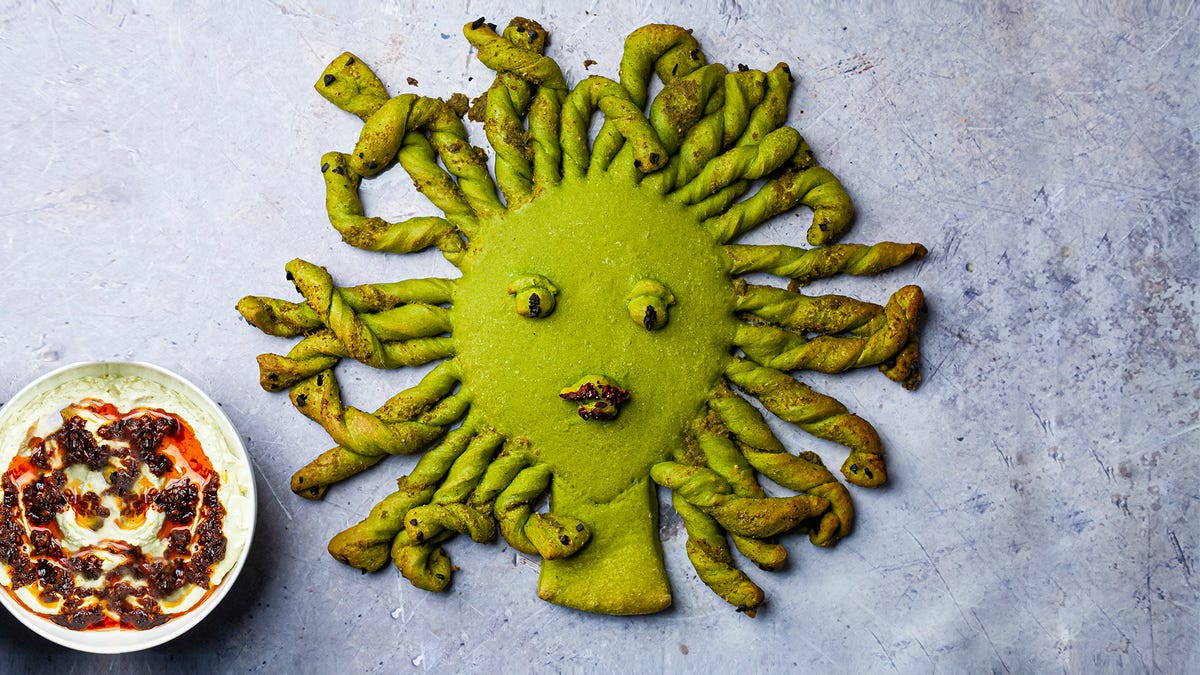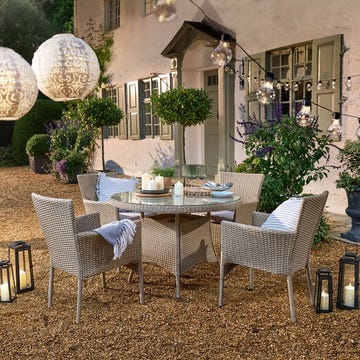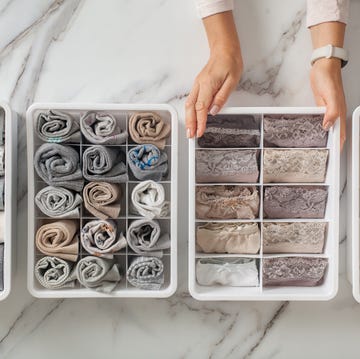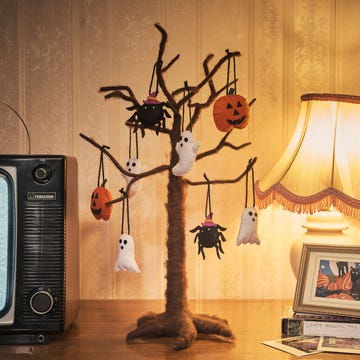Spooky season has arrived, and that can only mean one thing - pumpkins! You might think you already know how to carve a Halloween pumpkin but actually, there are a lot of handy tips and tricks that could level up your results and make the whole process a lot easier.
After reading this guide there'll be no more pumpkin envy looking at your neighbour's picture perfect doorstep display, while your lopsided and wilting lantern is turning away trick or treaters.
To pull together everything you need to know to create truly jaw-dropping pumpkins, from how to pick them to how to preserve them, Good Housekeeping enlisted the help of Natasha Guidon, of carving service YEG Pumpkins, as well as a couple of other experts along the way.
Natasha is a pumpkin carving enthusiast who turned her love of carving into a seasonal business - carving for brands, hotels, venues and private customers.
Pumpkin carving ideas: a step-by-step guide
While you might not be quite ready to take on designs as intricate as Natasha's, we've asked her what the novice carver needs to know...
Pumpkin Carving Kits
While your kitchen may be full of vegetable chopping utensils, none of them are quite right for carving.
"The basic kits are actually quite good," says Natasha. "They come with a scoop and a couple of different blades. Definitely avoid using kitchen tools, they're simply not safe. And they also don't do detail work very well."
Pumpkin Carving Stencils
The pumpkin carving rookie might not realise that a lot of designs you see have been done using stencils, so you can put the Sharpie down.
"You can free hand a very simple face — eyes, nose, mouth — especially if you're good at drawing. But a lot of the time the challenge is figuring out how to carve so that pieces don't fall through. You have to make sure there are places for every part of the design to actually attach onto the pumpkin. Stencils do that figuring out for you," Natasha explains.
Natasha's stencil source of choice is ZombiePumpkins.com, for well engineered designs marked with difficulty level. For a wide variety of free stencils with great beginner options she recommends PumpkinLady.com.
Natasha's top tip: "First time pumpkin carvers should pick something very simple and straightforward. Start with traditional jack-o'-lantern before you get into more intricate designs like bats and witches. Faces are a really good place to start, and so classic."
The best pumpkin to carve
It's important to put some thought into your pumpkin selection, but what exactly makes a good pumpkin choice?
"The most important thing that you're looking for is that the flesh hasn't started to go bad. Make sure that the flesh is still firm," advises Natasha.
When it comes to size and shape, larger pumpkins with flatter sides are easier to lay your stencil on, but really it comes down to your design.
"If I have a design that I really want to try, I’ll print it and take that to the store with me so that I know I'm getting a pumpkin that's an appropriate shape. It's geeky but I don't care," she admitted.
How to hollow out a pumpkin
Before you can get onto carving, you have to prep your pumpkin - and there's more to it than just scooping out the seeds.
"Cut out the top so that you can hollow out and clean up the inside, I do this in the sink to contain the mess," Natasha said.
"A lot of the kits come with a handy pumpkin scraper that will help you get out the seeds, but it also helps you to thin down the walls of the pumpkin," she explained, continuing: "Thin down to about a quarter of an inch, so that when you carve your blade goes all the way through and you get complete cuts through the flesh.
As a top tip, leave your pumpkin to dry out for as long as possible, as this will help the pumpkin's longevity when exposed to the open air.
How to stencil onto your pumpkin
Getting the stencil design onto your pumpkin is most commonly done by marking the design with lots of tiny holes.
"I print my stencil out on a regular sheet of paper, tape it on, and then my Transfer Tool looks like a giant pushpin," said Natasha.
"Line your cut lines with punctures and then it's like playing connect the dots with a pumpkin."
Natasha's top tip: "Once you have the design transferred onto the pumpkin, keep that stencil as a reference point because sometimes the dots will all start to look like they blend together. The stencil will help you remember what they all mean."
How to carve your Halloween pumpkin
Once your design is on, it's time to carefully begin cutting. The important part is to carve the pumpkin safely. "When it comes to carving, first remove the bottom of the pumpkin to give a flatter base," says Steven Carter-Bailey, ProCook's Food and Baking Expert.
"This will also help you maintain a steady hand for drawing and cutting out your design. Be sure to always cut away from your body," he explains.
When it comes to actually carving, Natasha recommends starting from the centre of your design. "Then, work your way out towards stable pumpkin. If you’re cutting inward it's going to make the centre of the pumpkin really unstable," she explained.
"If you’re right-handed work yourself out to the left, then around to the right, so that you never have your arm or wrist resting on cut pumpkin - and vice versa."
You can feel around which tool in the kit is working for you, but a general rule of thumb from Natasha is: "Use a larger blade to cut through long large lines, and then smaller blades for fine detail work."
Natasha's Top Tip: "Leave all the pieces in until you've carved everything, that leaves more stability in the pumpkin so you have a lower chance of breaking it. Then be very patient taking them out because sometimes you won't have cut all the way through and will have to re-cut."
How to light a Halloween pumpkin
"I find you get a more intense glow and a warmer glow from real candles, I usually put two tea-lights in," Natasha says.
For extra safety and to guarantee your pumpkin won't plunge into darkness, our Homes and Gardens Editor James Cunningham recommends one easy trick. "Use battery-operated tealights," he says. "Look out for designs that come with a handy timer, which makes a really clever way to make sure your design can be enjoyed as soon as it gets dark."
How to create a pumpkin display
"Everyone always pops their pumpkins by the front door," says James, "but why not consider adding a few miniature ones along your window frame?"
Natasha loves to create interesting displays using other elements. "I buy small hay bales, so that I can vary the heights of the pumpkins and I also utilise the two steps up to my door, to create some depth and height with my pumpkin display.
"Odd numbers look best. If I have just two, I make sure that I have different sizes, so that it makes it interesting."
"Embrace other natural materials as part of your display," suggests James. "Even crispy autumn leaves and foraged berries tucked around the pumpkin can add some seasonal charm to your Halloween look.
How can you make your pumpkin last longer?
How long your carved pumpkin last depends on lots of factors including the pumpkin itself, how long you have it lit for and the weather.
"Battery tealights will help to prevent the pumpkin decaying too quickly," says James.
"You definitely don't want to let it sit inside at room temperature (until you're displaying them). That’s when you get pumpkin rot," says Natasha. "Once you've cut your design out, rub petroleum jelly along all of the cut lines. It'll help give you just a couple more days of moisture before your pumpkin starts to look wilted."

















